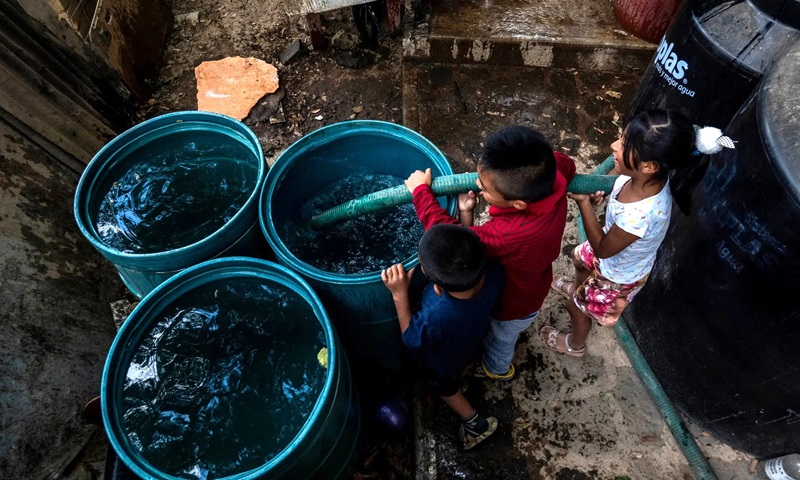Mexico City, one of the world’s largest cities, is one the brink of a serious water crisis, facing the possibility of a potential “Day Zero” by the end of June unless it rains, experts have warned.
Mexico City, which has a population of 23 million, has long struggled to bring water to its millions of residents, but three consecutive years of low rainfall, high temperatures and a collision of climate change, urban sprawl and poor infrastructure has pushed Mexico City to the brink of severe water crisis.
As of April 30, the North American Drought Monitor classified the federal district containing Mexico City as experiencing “severe” drought conditions. The latest Water Risk Atlas report, published by the World Resources Institute, describes Mexico City as facing “extremely high” water stress.
Locals fear that “Day Zero” could arrive as soon as June 26, according to Mexico Business News. Day Zero refers to the critical point at which a city’s water supply is predicted to be nearly completely depleted.
For months, local politicians downplayed the severity of the water crisis. However, the reality is setting in as several neighborhoods have already started to run out of water, according to a CNN report.
Cutzamala Water System
The Cutzamala water system, a crucial network of treatment plants, reservoirs, and canals that supplies water to tens of millions of people, is dangerously low.
The Cutzamala system — which is responsible for providing the capital with nearly a quarter of its water supply — includes a complex network of canals, tunnels, and pipelines, 6 pumping plants, 11 dams, 10 reservoirs, a major treatment plant, 2 storage tanks along the route, and 4 storage tanks at the terminus in Mexico City.
The Mexican government described the Cutzamala system as essential for the lives of millions in the Mexico City Metropolitan Area and the Valley of Toluca Metropolitan Area. Typically, this system moves about 15 cubic meters of water per second and serves approximately 22 million people. Currently, it is operating at just 28% capacity, as reported by The Washington Post.

A significant contributing factor to the crisis is the city’s deteriorating infrastructure. It is estimated that about 40% of Mexico City’s water is lost due to leaky pipes and other issues. Federal congressman Gabriel Quadri de la Torre of the Coyoacán district highlighted that fixing these issues would cost billions, a sum that the city is unlikely to be able to afford.
With the critical date of June 26 drawing nearer, the city is in desperate need of rain. However, Christina Boyes, a professor at the Center for Economic Research and Teaching in Mexico City, warns that rainfall might create a “false sense of security.”
Researchers from the National Autonomous University of Mexico proposed measures to help save the Cutzamala system. Their study suggestes that intensive water capture, using treated residual water for agriculture, and refilling aquifers with surface water could make a significant difference.
The study also pointed out that only 75% of farms in the area use irrigated water and that most do not reuse water when they can. Implementing these measures, however, would cost an estimated $5 billion.
In response to the crisis, Mexico’s National Water Commission announced in February that it is working on projects to improve the Cutzamala system and supplement the water supply.
The Mexico City Water System introduced a plan aimed at improving infrastructure reliability, strengthening private company participation in the water network, and harvesting rainwater in schools.
Despite these efforts, the situation remains dire. As “Day Zero” looms, Mexico City must grapple with the harsh reality of its water crisis and seek both immediate and long-term solutions to secure a sustainable water future for its residents.